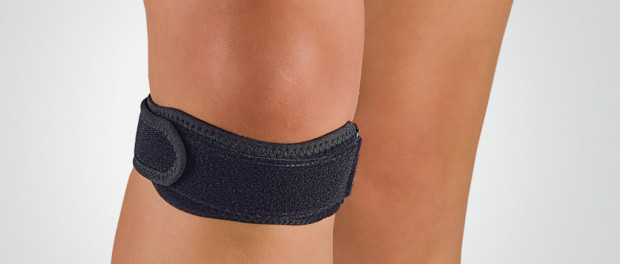Why Do Athletes Wear Knee Straps For Knee Pain?
Why do youth athletes tend to be wearing knee straps more often?
Scottsdale, AZ – This is a great question. It makes me so sad to hear a statement like this. Athletes, at a very young age, are accepting knee pain as the norm. This should never be the case. If there is knee pain, or pain in ANY JOINT AT ANY TIME, it is not a good thing!!!!! Pain that continues to be in one spot or comes and goes in the same spot, is a RED FLAG and NEEDS to be addressed!!! So, when kids are wearing knee bands around their knee, it is telling me, as a sports medicine specialist, that those athletes are having chronic (continually) pain around their knee while
playing their sport. My first reaction is we need to find out the CAUSE OF THAT PAIN!! I would want to assess what is not balanced within their biomechanics, resulting in a re-directed force through the knee (or knee cap). Most of the time, when I see an athlete that has continual or intermittent pain in their knee and feel the need for a knee brace or knee strap, I notice that the quads are too tight, hipflexors are too tight, and directly applying an extra shear force across the knee cap every time the knee bends. Also, a direct effect of quads and/or hip flexors being too tight, is the Glute muscle are unable to activate fully, and therefore doesn’t allow the hip to get into full hip extension. Full Hip Extension is a very important biomechanical pattern needed for running, jumping, and landing. When hip extension is compromised, force has to be re-directed into another joint…most commonly the knees, but force can re-direct into the ankle, hips, or back too. All of which is bad and results in injury.
Another, conclusion that can be made from knowing an athlete has chronic or intermittent joint pain, is: the athlete is not optimizing their full athletic potential and compromising their speed, agility, and/or power. And always remember, knee straps and knee braces only decrease pain symptoms, they do not cure knee pain.
What can parents and athletes do to help reverse this knee pain, keeping in mind that practices and games take up a lot of time and makes it difficult to get in for regular training?
There are so many things an athlete can do in their own home and at their practices that can help with sports injuries like knee pain. To make home exercises as effective as possible, a thorough biomechanical assessment, done by a knowledgeable sports performance & sports medicine specialist is vitally important. When we know what the CAUSE of the injury is, then a 10-20 minute routine at home before or after practice is much more efficient and effective. From experience, the common causes and concurrent home exercises that tend to help are as follows:
Overly tight quads — Foam roll the outside portion of the front of the thigh. Find the most painful spots on the thigh and roll back and forth over that spot with a foam roll.
Overly tight hipflexors — See the videos on my website for some excellent hip flexor stretches
Weak of glutes/lack of hip extension — Glute bridges, Prone Glute Squeezes off back edge of couch (someone would only know this exercise if you have worked with me before), Triple Extension-Flexion Exchanges against wall, kettle bell swings (when they are actually done correct)
Please visit my informational website on sports injuries and sports performance at: www.ScottsdaleSportsMedicine.net and follow us on our Facebook Fan Page www.Facebook.com/EfficientMovementAthletes for more information on sports injuries.
What would it take to have our team train with you a regular basis that would fit around their practice schedule?
We have athletes that come in 1x per month up to as much as 3x/week. Any exposure we can have with them to teach them how to stretch and train their body PROPERLY is beneficial. I have seen some pretty significant changes in athletes that only come to me one time per month, but the key to this, is they have to do at least 10 minutes of exercises, specific to their body, at home a few times per week.
Prior to any sessions, I STRONGLY recommend they schedule a full body assessment with me prior to any team training sessions though. This way, each individual athlete does their own exercises that will correct their biomechanics.
Thank-you, with great sincerity, for helping me educate parents, athletes, and coaches. This is an area of knowledge I would like EVERY parent, EVERY coach, and EVERY athlete understand and know.






